New American Standard Bible – NASB 2020
Copyright © 1960, 1962, 1963, 1968, 1971, 1972, 1973, 1975, 1977, 1995, 2020 by The Lockman Foundation
A Corporation Not for Profit, La Habra, California
All Rights Reserved
www.lockman.org
The “NASB,” “NAS,” “New American Standard Bible,” “New American Standard,” and lighthouse logo are trademarks registered in the United States Patent and Trademark Office by The Lockman Foundation. Use of these trademarks requires the permission of The Lockman Foundation.
Requests for quotations, reprints, or other permission requests, must be directed to and approved in writing by The Lockman Foundation. www.lockman.org
FOREWORD
Scriptural Promise
The grass withers, the flower fades,
but the word of our God stands forever.
Isaiah 40:8
The New American Standard Bible has been produced with the conviction that the words of Scripture as originally penned in the Hebrew, Aramaic, and Greek were inspired by God. Since they are the eternal Word of God, the Holy Scriptures speak with fresh power to each generation, to give wisdom that leads to salvation, that people may serve Christ to the glory of God.
The NASB strives to adhere as closely as possible to the original languages of the Holy Scriptures and to make the translation in a fluent and readable style according to current English usage.
The Fourfold Aim
of
The Lockman Foundation
- These publications shall be true to the original Hebrew, Aramaic, and Greek.
- They shall be grammatically correct.
- They shall be understandable.
- They shall give the Lord Jesus Christ His proper place, the place which the Word gives Him; therefore, no work will ever be personalized.
Preface to The
New American Standard Bible
In the history of English Bible translations, the King James Version is the most prestigious. This time-honored version of 1611, itself a revision of the Bishops’ Bible of 1568, became the basis for the English Revised Version appearing in 1881 (New Testament) and 1885 (Old Testament). The American counterpart of this last work was published in 1901 as the American Standard Version. The ASV, a product of both British and American scholarship, has been highly regarded for its scholarship and accuracy. Recognizing the values of the American Standard Version, The Lockman Foundation felt an urgency to preserve these and other lasting values of the ASV by incorporating recent discoveries of Hebrew and Greek textual sources and by rendering it into current English. Therefore, in 1959 a new and original translation project was launched, based on the time-honored principles of translation used for the ASV and KJV to produce an accurate and readable English text. The result is the New American Standard Bible.
This edition of the NASB represents updates according to modern English usage and refinements recommended over the last several years as well as updates based on current research of the ancient manuscripts.
Principles of Translation
MODERN ENGLISH USAGE: The goal is to render the grammar and terminology in contemporary English. When it was felt that the word-for-word literalness was unacceptable to the modern reader, a change was made in the direction of a more current English idiom. In editions that include the full set of translator’s notes, in the instances where this has been done, a more literal rendering is indicated by “Lit” notes when necessary. These notes provide the “literal” meaning of the word or phrase in question, or as more technically known, its formal equivalent in the immediate context. Almost all words have a range of meanings, and a “Lit” note supplies the literal or formal meaning for that particular context. There are a few exceptions to this procedure. Punctuation is a relatively modern invention, and ancient writers often linked most of their sentences with “and” or other connectives, which are sometimes omitted at the beginning of sentences for better English. Also, the Hebrew idiom “answered and said” is sometimes reduced to “answered” or “said” as demanded by the context. For current English the idiom “it came about that” has not been translated in the New Testament except when a major transition is needed.
GENDER ACCURACY: In past editions it was common practice to translate the Greek word anthropoi as “men” and the Hebrew adam when used as a plural as “men,” as well as all pluralistic uses of ish and similar words. The same was true for singulars, as masculine. This was never intended to be gender-exclusive when the context indicated that women were included; it was assumed at that time that readers inferred the inclusion of women. Gender accuracy is important, however, so in this edition Greek and Hebrew words that are not actually exclusive in gender as they are used in a given context are rendered by inclusive terms, such as “people.” Just as important, when the words in the original languages are in fact referring only to males or females, the distinction is maintained in English.
THE WORD BRETHREN: This word was used in past editions of the NASB as the plural of the Greek “brothers” (adelphoi) because it can still be used in a formal setting to address members of a profession, society, or church, regardless of gender. However, most people today would seldom use “brethren” informally and not often in most churches. This created the challenge of choosing a replacement that would have the same meaning that led to the original usage of “brethren,” and only “brothers” was deemed adequate. To be gender-accurate, when it is clear that the author or speaker is referring to women as well as men, “and sisters” is added in italic for accuracy and clarity. The italic is necessary to indicate that the addition is implied in the meaning of adelphoi for the context, and the addition is not in the Greek text itself.
LET’S FOR ACTION: In most places the phrase “let us” has been replaced with “let’s” when a proposal is being made by one or more persons within a group to engage in an action. Such a proposal is common not only in English, but also in the ancient languages of the Bible; however, it is expressed in the ancient languages grammatically rather than by using an auxiliary, “helping” verb such as “let.” It is common today for readers to understand “let us” to mean “allow us,” so in effect, “let us” has become unintentionally misleading to most readers. Therefore, the simple contraction “let’s” has emerged as the clearest expression because this form reflects the nuance of meaning in the original languages—that is, a proposal to do something. However, in some situations “Let Us” is retained for intimate discourse within the Godhead, as in Gen 1:26. “Let us” is also kept when there is a request for permission, and in some other select cases.
ALTERNATIVE READINGS: In addition to the more literal renderings explained under MODERN ENGLISH USAGE, notations have been made to include alternate translations, readings of variant manuscripts, and explanatory equivalents of the text. Only such notations have been used as have been felt justified in assisting the reader’s comprehension of the terms used by the original author.
HEBREW TEXT: In the present translation BIBLIA HEBRAICA STUTTGARTENSIA and, where available, BIBLIA HEBRAICA QUINTA have been employed, together with the LXX, the Dead Sea Scrolls, ancient versions, and the most recent scholarship from lexicography.
HEBREW TENSES: The timing of tenses in Hebrew can be a challenging element of translation and careful attention has been given to the requirements of accurate translation, the sequence of tenses, and the immediate and broad contexts.
THE PROPER NAME OF GOD IN THE OLD TESTAMENT: In the Scriptures, the name of God is most significant. It is inconceivable to think of spiritual matters without a proper designation for the Supreme Deity. The most common name for the Deity is “God,” a translation of the original Elohim. One of the titles for God is “Lord,” a translation of Adonai. There is another name which is understood as God’s special or proper name, that is, the four Hebrew letters equivalent to the English letters YHWH (Exodus 3:14 and Isaiah 42:8). This name has not been pronounced by the Jewish people because of reverence for the great sacredness of the divine name. This edition consistently translates this name as LORD. The only exception to this translation of “YHWH” is when it occurs in immediate proximity to the word “Lord,” that is, Adonai. In that case it is regularly translated “GOD” in order to avoid confusion.
For many years YHWH has been transliterated as Yahweh, however there is no complete certainty about this pronunciation. While “Yah” can be verified separately, the rest of the name cannot.
NAMES IN THE NEW TESTAMENT: The Greek versions of Hebrew names found in the New Testament, such as “Zacharias,” are usually given in their original Hebrew forms, as in “Zechariah” for “Zacharias.” Exceptions occur when the person is very commonly known by another name in English versions of the Bible. One of the most notable of such names is “James.” An accurate translation would render this name “Jacob.” Unfortunately, many would find it confusing to suddenly change the name “James” to “Jacob.” There are other special cases where we do not follow the pattern outlined above, and these are often noted. The name “Jesus” itself is a special case, based on the Greek, from an abbreviated form of “Joshua.” In fact, in two cases in the New Testament the Greek name refers instead to the famous Joshua of the Old Testament (Acts 7:45; Heb 4:8).
GREEK TEXT: Consideration was given to the latest available manuscripts with a view to determining the best Greek text. In most instances the 28th edition of the Nestle-Aland NOVUM TESTAMENTUM GRAECE was followed. For Acts and the General Epistles, the Editio Critica Maior (ECM) was followed in most instances. However, the apparatuses provided by both editions are intended to enable scholars to make informed decisions about readings, and sometimes alternate readings with better support to those chosen by the editors were preferred.
GREEK TENSES: A careful distinction has been made in the treatment of the Greek aorist tense (usually translated as the English past, “He did”) and the Greek imperfect tense (normally rendered either as English past progressive, “He was doing”; or, if inceptive, as “He began to do” or “He started to do”; or else if customary past, as “He used to do”). “Began” is italicized if it is added to translate an imperfect tense, in order to distinguish it from the Greek verb for “begin.” In some contexts the difference between the Greek imperfect and the English past is conveyed better by the choice of vocabulary or by other words in the context, and in such cases the Greek imperfect may be rendered as a simple past tense (e.g. “had an illness for many years” would be preferable to “was having an illness for many years” and the first option would be common in English).
Not all aorist tenses have been rendered as English pasts (“He did”), because some of them are clearly to be rendered as English perfects (“He has done”), or even as past perfects (“He had done”), judging from the context in which they occur. Such aorists have been rendered as perfects or past perfects in this translation.
As for the distinction between aorist and present imperatives, these have usually been rendered as imperatives in the customary way, rather than attempting any fine distinction such as “Begin to do!” (for the aorist imperative), or, “Continually do!” (for the present imperative).
As for the sequence of tenses, care was taken to follow English rules rather than Greek in translating Greek presents, imperfects, and aorists. For example where English says, “We knew that he was doing,” Greek puts it, “We knew that he does”; similarly, “We knew that he had done” is the English for “We knew that he did.” Likewise, the English, “When he had come, they met him,” is represented in Greek by, “When he came, they met him.” In all cases a consistent transition has been made from the Greek tense in the subordinate clause to the appropriate tense in English.
In the rendering of negative questions introduced by the Greek particle mē (which always expects the answer “No”) the wording has been altered from a mere, “Will he not do this?” to a more accurate, “He will not do this, will he?”
EXPLANATION OF GENERAL FORMAT
[Contents / Books of the Bible]
PARAGRAPHS are designated by boldfaced verse numbers or letters.
CAPITALIZED WORDS are used to provide helpful information. Personal pronouns are capitalized when pertaining to Deity. The word “Law” is capitalized when pertaining to Mosaic Law.
ITALICS are used in the text to indicate words that are not found in the original Hebrew, Aramaic, or Greek but are implied by it, or are sometimes necessary for correct English. Italics are used in the marginal notes to signify alternate readings for the text. Roman text in these marginal alternate readings is the same as italics in the Bible text. There are also special cases of italics referring to words that actually are in the original text. Italic “began” mentioned in GREEK TENSES is one example, where “began” communicates the grammatical tense of a verb. Another is italic possessive pronouns for Greek articles (“the” in Greek) used as possessive pronouns, a common feature in the Greek language. “His good pleasure,” literally: “the good pleasure” in Phil 2:13 is an example. The purpose of the italic in this case is to inform the reader that the expected Greek word (the Greek possessive pronoun) is not found in the original text, but is represented by another word (the article) in the original text.
SMALL CAPS in the New Testament are used in the text to indicate Old Testament quotations or references to Old Testament texts. Variations of Old Testament wording are found in New Testament citations depending on whether the New Testament writer translated from a Hebrew text, used existing Greek or Aramaic translations, or paraphrased the material. It should be noted that modern rules for the indication of direct quotation were not used in biblical times, and the ancient writer would use exact quotations or references to quotation without any specific indication of them.
ASTERISKS are used to mark verbs that are historical presents in the Greek grammar and have been translated with an English past tense in order to conform to modern usage. The translators recognized that in some contexts the present tense seems more unexpected and unjustified to the English reader than a past tense would have been. But Greek authors frequently used the present tense for the sake of heightened vividness, thereby transporting their readers in imagination to the actual scene at the time of occurrence. However, the translators felt that it would be wise to change these historical presents to English past tenses.
ABBREVIATIONS AND SPECIAL MARKINGS:
Aram = Aramaic
DSS = Dead Sea Scrolls
Gr = Greek
Heb = Hebrew
Lat = Latin
LXX = Greek translation of O.T. (Septuagint)
MT = Masoretic Text
Lit = A literal translation (formal equivalent)
Or = An alternate translation justified by the original language
Ancient versions = O.T. manuscripts that are not Hebrew
[[ ]] = In text, double brackets indicate words very likely not in the original manuscripts
[ ] = In text, brackets indicate words probably not in the original manuscripts
[ ] = In notes, brackets indicate references to a name, place, or thing similar to, but not identical with that in the text
cf. = compare
ff = following verse or verses
mg = Refers to a marginal reading on another verse
ms, mss = manuscript(s)
v, vv = verse(s)

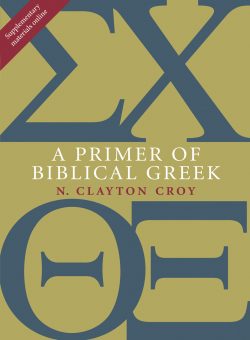


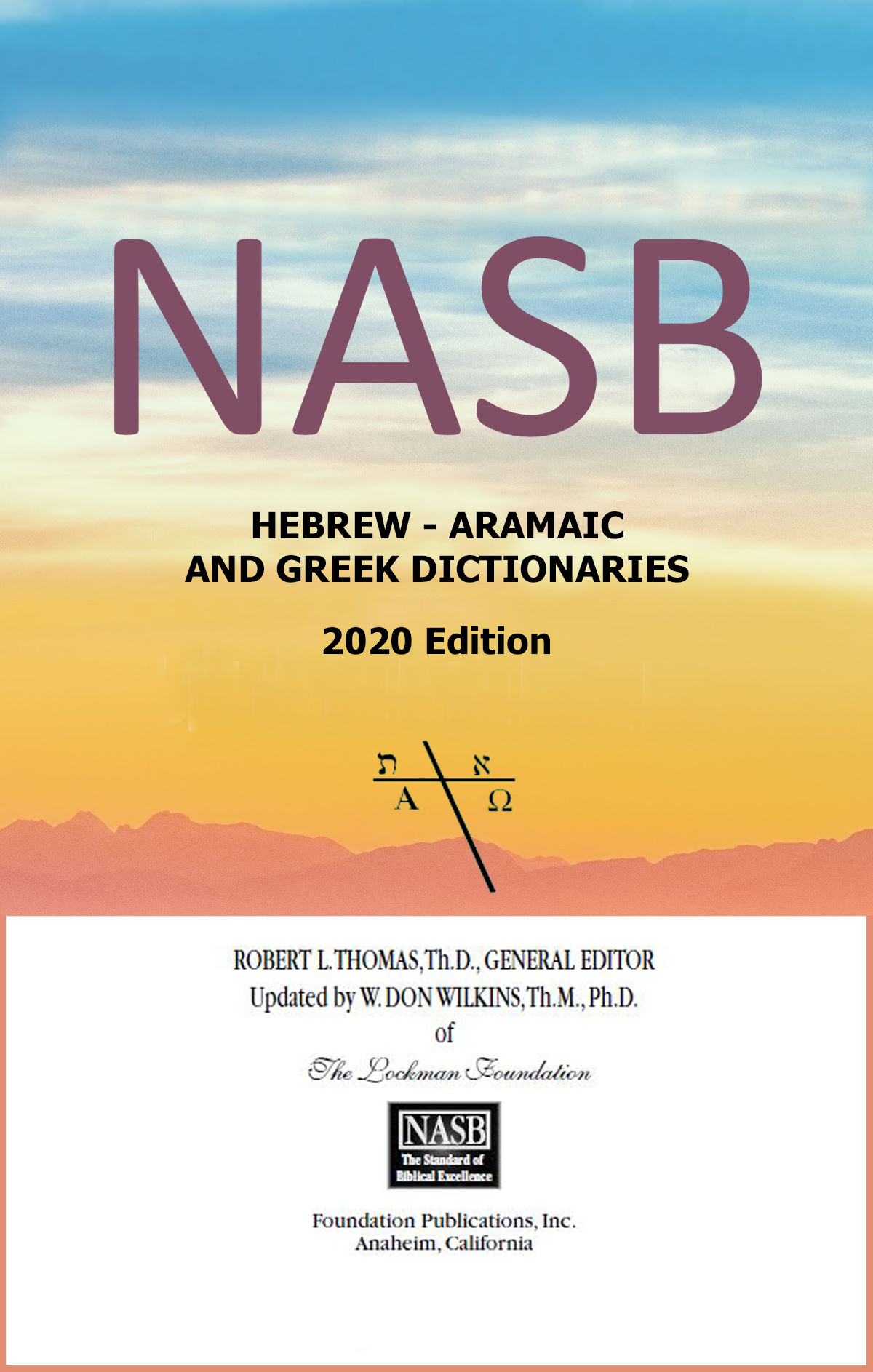
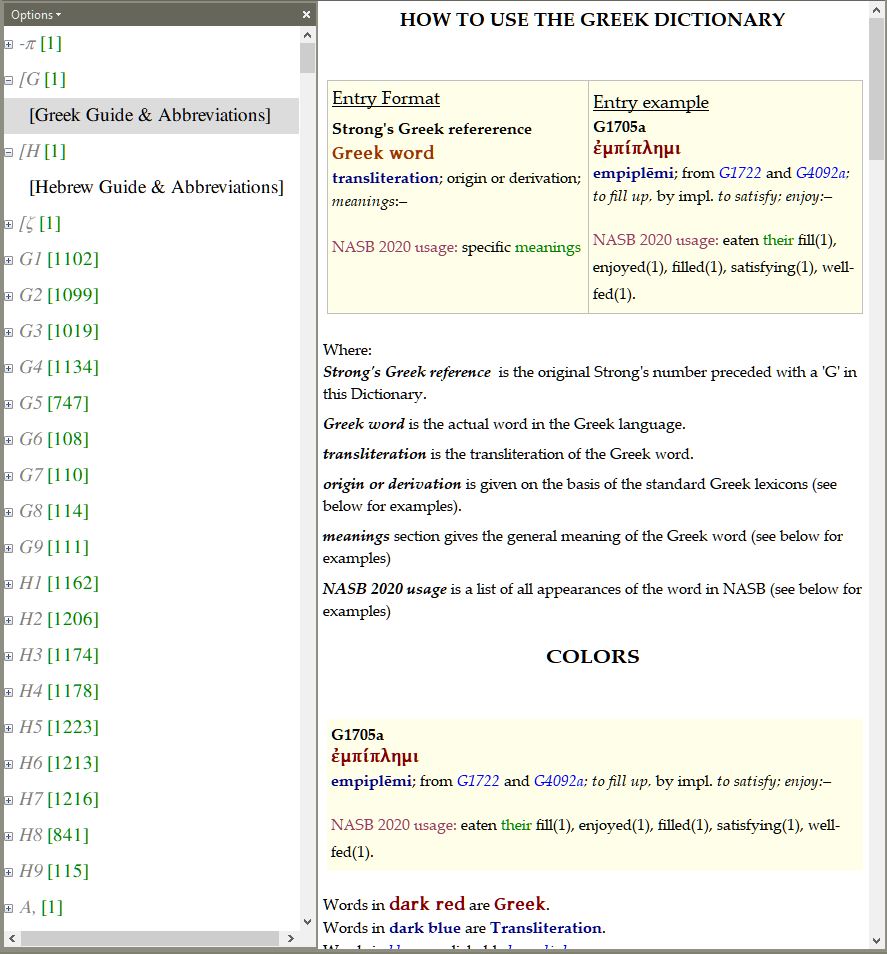

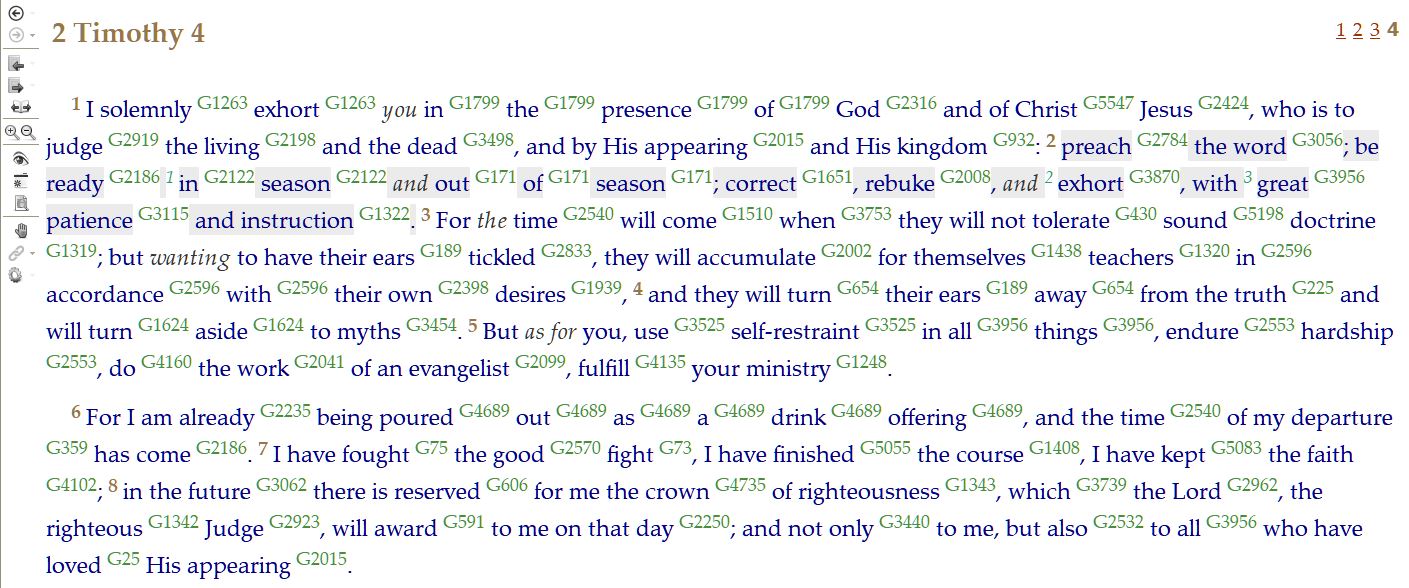

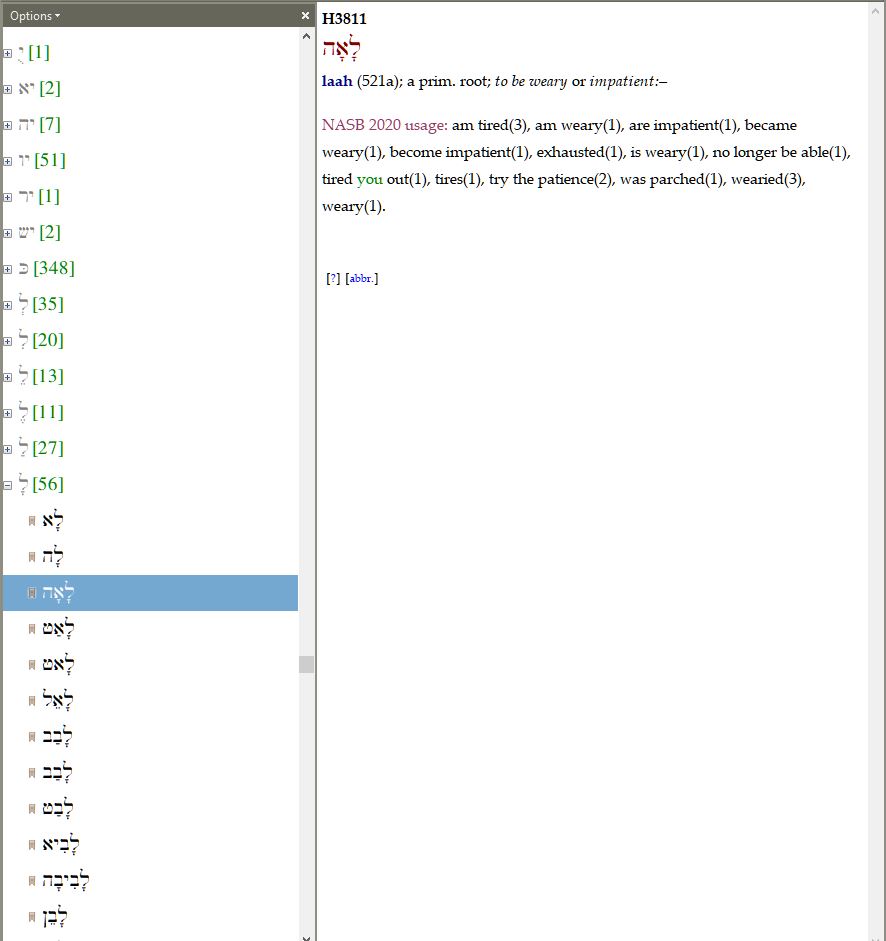
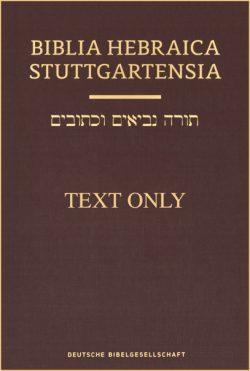
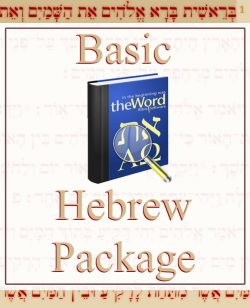
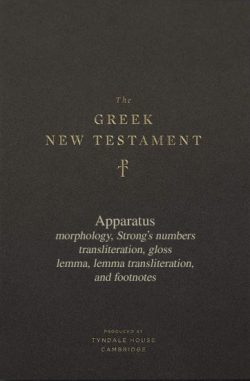


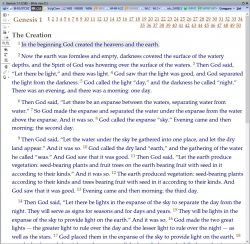
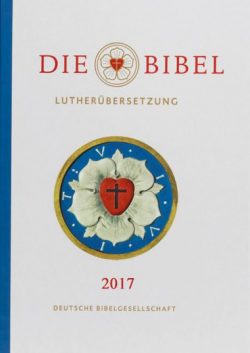
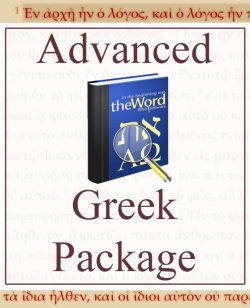
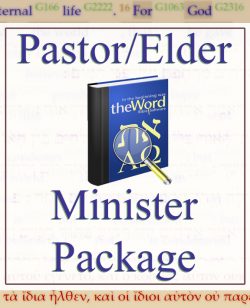
THGNT Interlinear Bundle